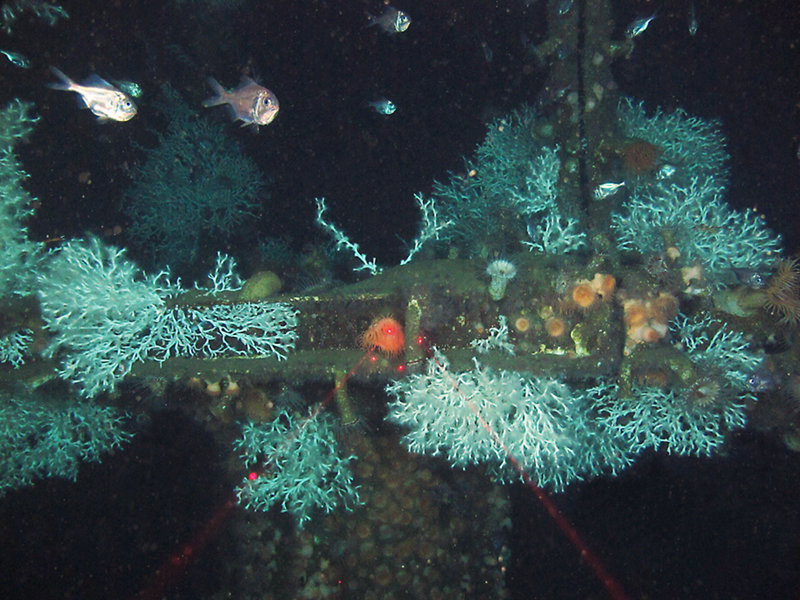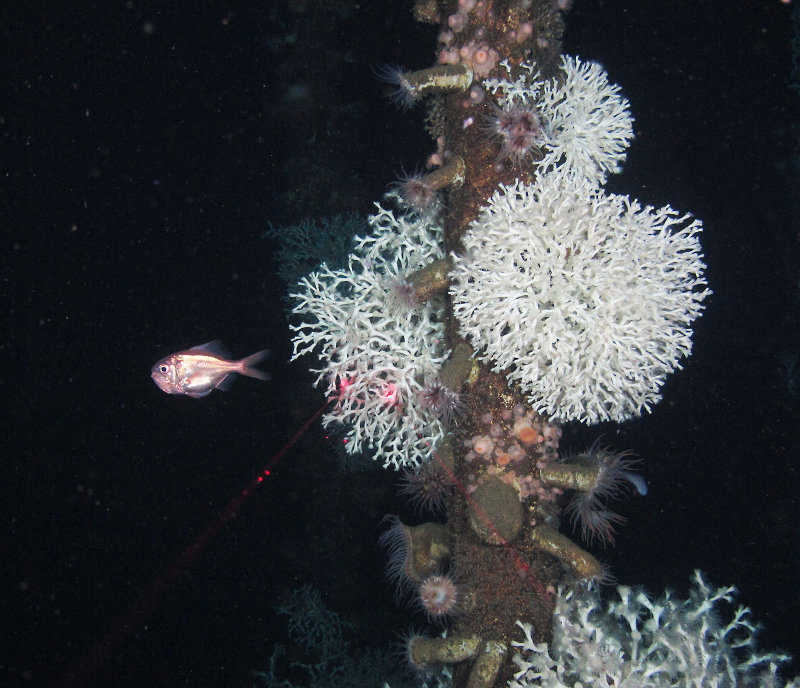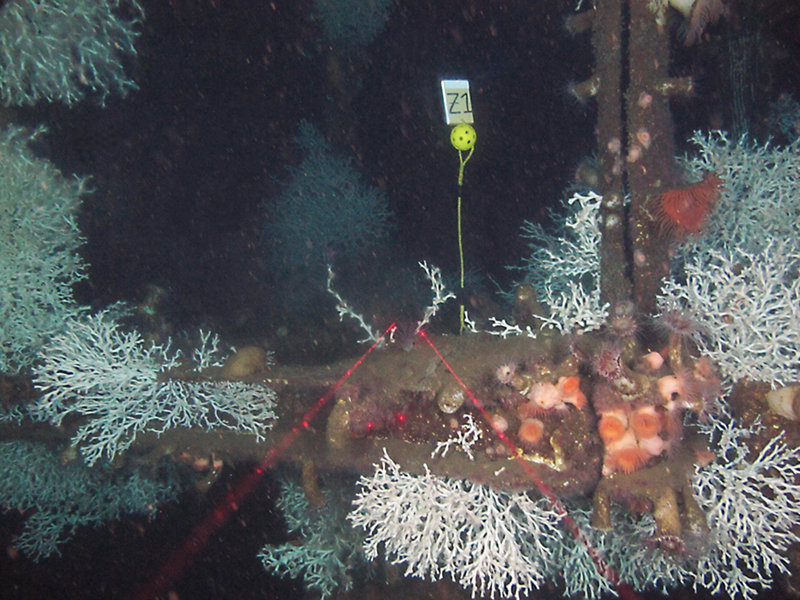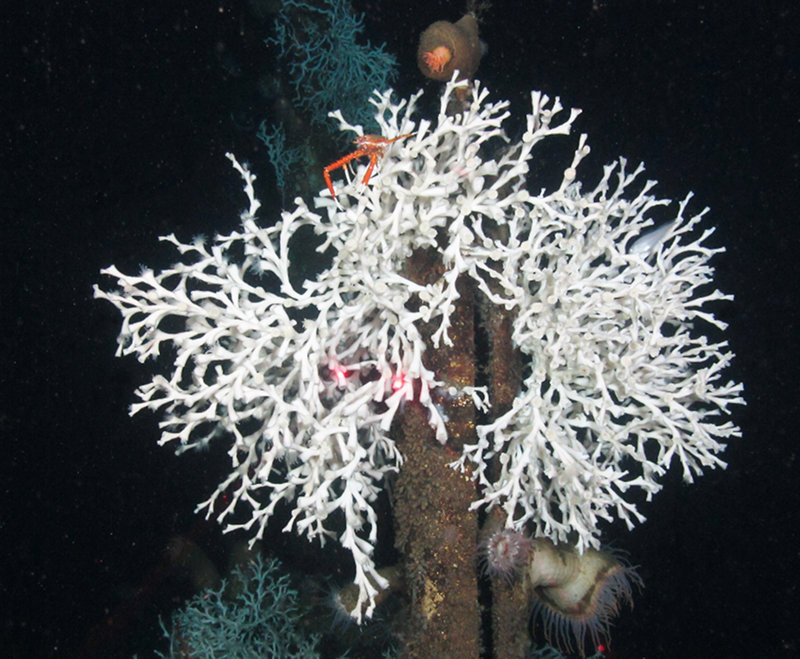
This media resources page provides members of the media with information; resources; and broadcast, print, and web-quality imagery created by NOAA's Office of Ocean Exploration and Research and partners for the Lophelia II 2012 Expedition.

Lophelia Community at the Zinc Subsurface Platform Image courtesy of Lophelia II 2012 Expedition, NOAA-OER/BOEM. Download larger version (jpg, 1.8 MB).

Large Lophelia Colonies and Anemones Image courtesy of Lophelia II 2012 Expedition, NOAA-OER/BOEM. Download larger version (jpg, 1.3 MB).

Coral Community Image courtesy of Lophelia II 2012 Expedition, NOAA-OER/BOEM. Download larger version (jpg, 1.1 MB).

Lophelia Colonies and Squat Lobster Image courtesy of Lophelia II 2012 Expedition, NOAA-OER/BOEM. Download larger version (jpg, 1.4 MB).
Please see the Contact Us page for information regarding the specific media, public, and government inquiries.